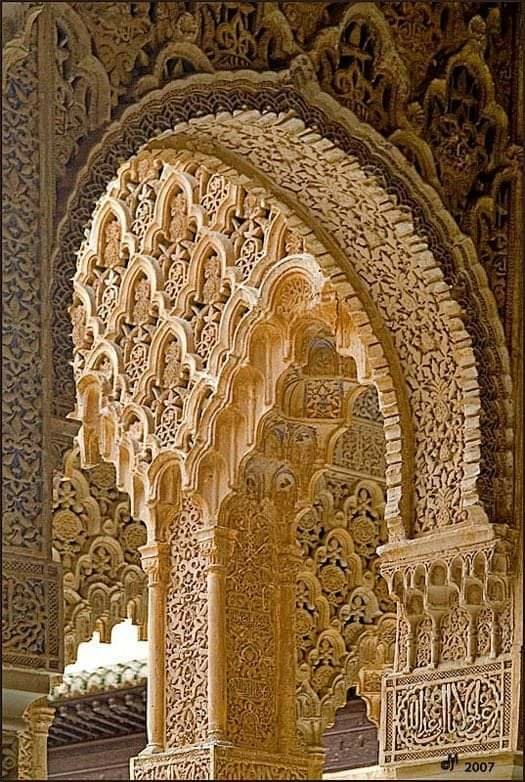
Alhambra palace Spain.
Alhambra, palace and fortress of the Moorish monarchs of Granada, Spain. The name Alhambra, signifying in Arabic “the red,” is probably derived from the reddish colour of the tapia (rammed earth) of which the outer walls were built.
The Alhambra is situated in a locale of rare natural beauty. The plateau upon which it was built overlooks the Albaicín (Albayzin) quarter of Granada’s Moorish old city. At the base of the plateau, the Darro River flows through a deep ravine on the north. The park outside the palace (Alameda de la Alhambra) was planted by the Moors with roses, oranges, and myrtles. Its most characteristic feature, however, is the dense wood of English elms brought there in 1812 by the duke of Wellington during the Peninsular War.
The present entrance through the Oratory leads to the Patio de los Arrayanes (Court of the Myrtles). This court is 140 feet (43 metres) long by 74 feet (23 metres) wide. In the centre is a large reflecting pond set in the marble pavement. The brilliant green of the pond and the manicured myrtles growing along its edges provide a sharp contrast to the white marble of the surrounding courtyard. Surrounding the Court of Myrtles are the rooms of the Palacio de Comares (Comares Palace). The Facade of Comares, to the west of the courtyard, is an ornamental gateway constructed in the 14th century by Muḥammad V. It was in this area that the sultan customarily held audience with his vassals.
.
. The Alhambra and the Generalife were collectively designated a UNESCO World Heritage site in 1984 (expanded in 1994).
